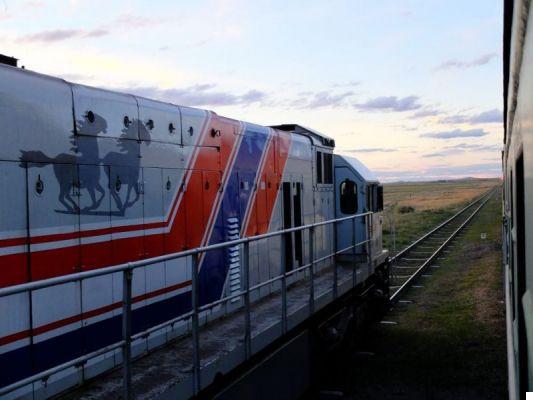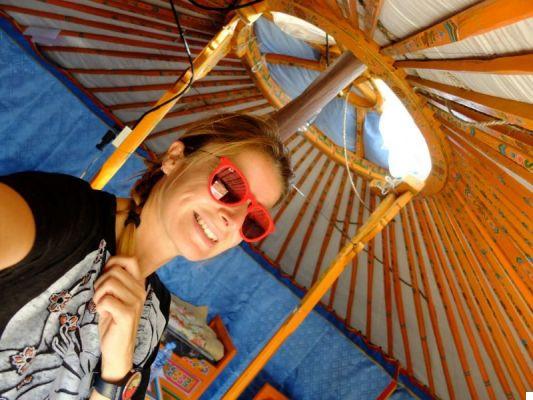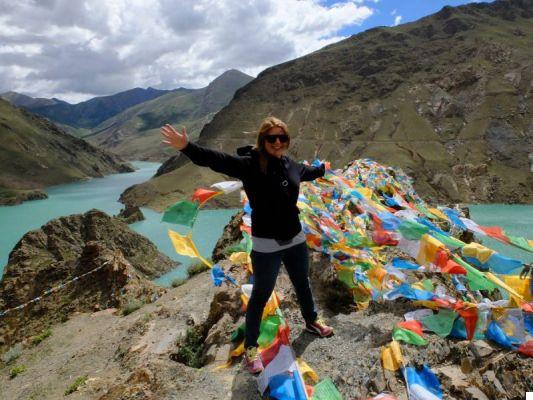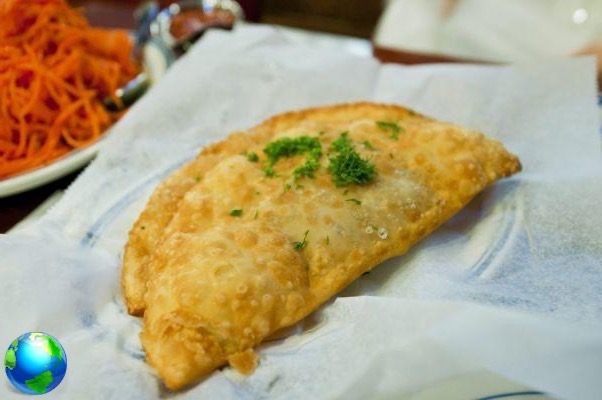Trans-Siberian or Trans-Mongolian? How many days?
La Trans-Siberian it is one of those trips that every traveler (with a capital V) dreams of making at least once in their life!
It is a mythical journey: to go da Mosca a Vladivostok o Beijing by land, crossing 3 countries and 7 time zones is something mystical.
Forgive me if I will dwell on it, but it is really difficult to describe this trip in a synthetic way.
To begin with, beyond what is common thought, the trans-Siberian is not a train. It is a railway section with 3 variants: the classic Trans-Siberian to Vladivostok, the Trans-Mongolian to Beijing and the Trans-Manchurian, which always arrives in Beijing via Manchuria. You can travel it using a single train or several trains and you can do it with different stops in the various countries it crosses (Russia, Mongolia, China), or all in one breath without ever getting off (in 1 week).
We decided to do the transmongolian with a 3-day stop on Lake Baikal and another of 4 in Mongolia, for a total of 14 days.
Health Insurance is required
Before we get down to business, let me remind you that in Russia, Mongolian and China our health coverage is not valid. My advice is to always take out medical-luggage insurance that can cover you during the trip. I am very happy with many insurance companies, a site that compares the policies of different companies and proposes the most convenient policy for that particular trip. To do this you will have to enter the data relating to your trip (country, duration, etc.) and they will send you an email with the best proposal that you can then buy directly online (!!!).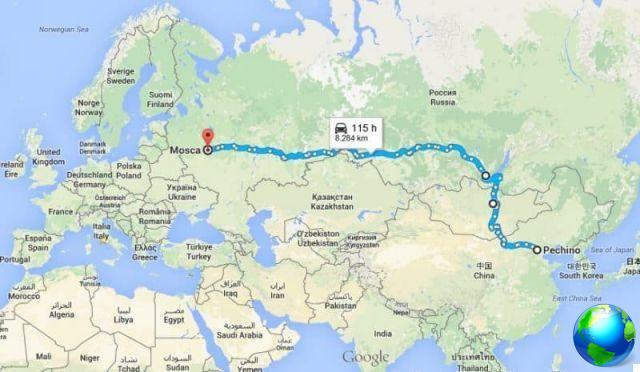
The stages of the Trans-Siberian
First leg: from Moscow to Irkutsk (Siberia)
After spending 2 days in beautiful Moscow, we got on this mythical train. I'm not even going to tell you how excited I was, one of my biggest dreams was coming true !!
This was the longest route of my trans-Siberian. 4 nights and 3 days on the train, without ever getting off (or almost). The train only makes small stops (max 30 minutes) where you can get off to buy food and stretch your legs.
We shared the whole trip (in second class) with a Mongolian woman who smiled at us only once in 3 days. Virtually impossible to communicate with her; on the other hand, did he offer us all kinds of food (salami, vegetables, etc.)?
During this route we had a little mishap: in the stop of Omsk we got distracted for a moment and the train left with our luggage while we were on the ground. The feeling you get is obviously horrible!
Fortunately, we did not allow ourselves to be discouraged. We took a taxi on the fly and headed to the next stop (which was 320km away!). Miraculously we made it (for a few minutes) !! It was the best spent 7000 rubles of our vacation! ?
This taught us that we must: 1) always ask the provodnitsa (the manager of the wagon) for confirmation on how long the train will stop; 2) never go too far from your wagon!
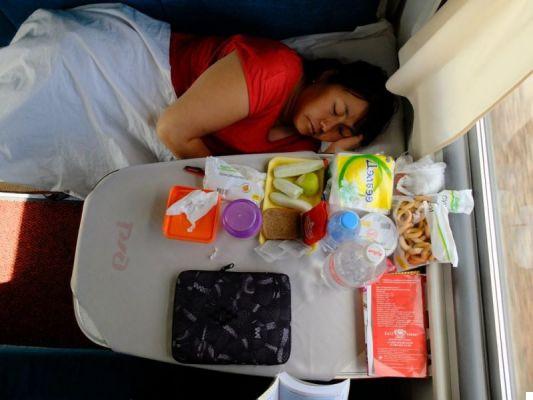
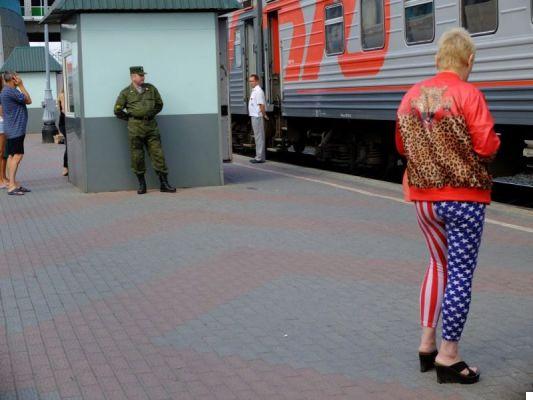
Lake Baikal
Irkutsk is the ancient Siberian capital, the largest city in the area as well as the gateway to Lake Baikal.
The impact was not the best, the weather was gray and it seemed to really be in post-war Russia. Gray buildings and somewhat surreal landscapes.
We saw it again 2 days later, on returning from the lake, with the sun and the effect was different; in retrospect it's not that bad. It has many old buildings with beautiful wooden doors / windows and is quite lively.
From there, we went by hydrofoil to Bolshie koty, a lakeside village that can only be reached by boat. The village is very small, but very nice and eco-sustainable, made up of wooden houses and villas overlooking the lake. From here there are several trekking paths that run along the lake and go inland. The landscapes are truly beautiful! The lake turns pink at sunset .. pure magic. The paths run along the coast, on one side there is the very blue and transparent water of the lake (also drinkable they say, but we did not drink it) .. on the other there is a dense forest of pines, really relaxing.
It was hot and we could have bathed (as the Russians do), but you risk freezing! The water is scarce 10 degrees; the only salvation (perhaps) consists in taking a bath and throwing yourself into a banya russo (sauna) immediately after. Let's say we limited ourselves to sunbathing!
This 2 day trip (we slept 1 night in a very nice guesthouse) really deserves a lot! Highly recommended !!
Many tourists prefer to go to theOlkon island (energy center for shamans), but it is much more touristy and far away (7h bad road from Irkutsk + ferry).
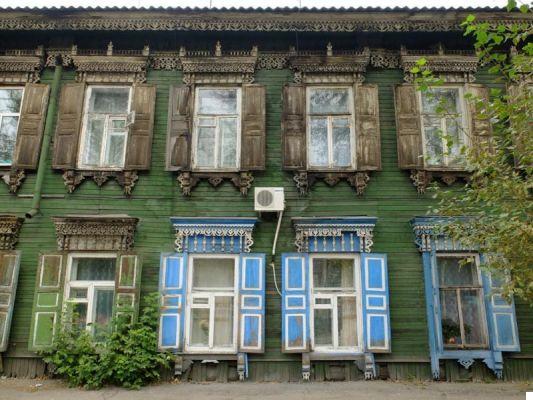
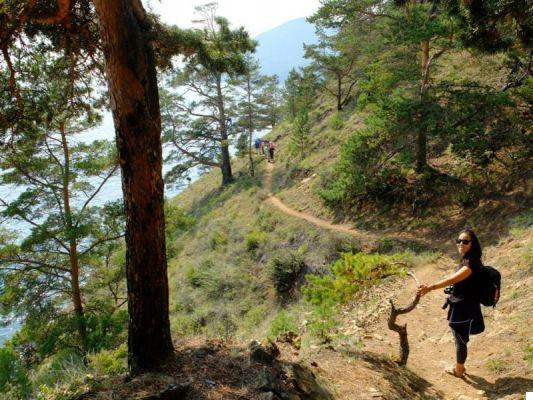
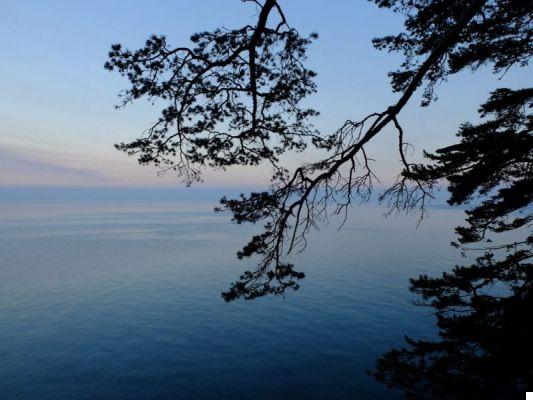
Second leg: from Irkutsk to Ulaanbaatar (Mongolia)
A Irkutsk we resumed the Trans-Siberian at a time of Ulaanbaatar. This time it was a Chinese train, uglier and less clean than the Russian one (except for the dining car). Here we shared the bunk with 2 French guys and there were a lot more young backpackers than on the first leg. The trip lasts 24h and it takes at least 5/6 to pass the Russia-Mongolia border! During the border crossing, neither the toilets nor the restaurant can be used (the carriage is detached!), So… remember to do everything first! I was bursting !!
Landscape speaking it is the most beautiful route; the train runs along Lake Baikal for at least 50 km before descending to Mongolia and the railway passes very close to the water.
As you enter Mongolian territory then, the landscape becomes more and more desert and i begin to appear gher (the classic tents of the Mongolian nomads). You arrive in Ulaanbaatar at dawn and the view is amazing.
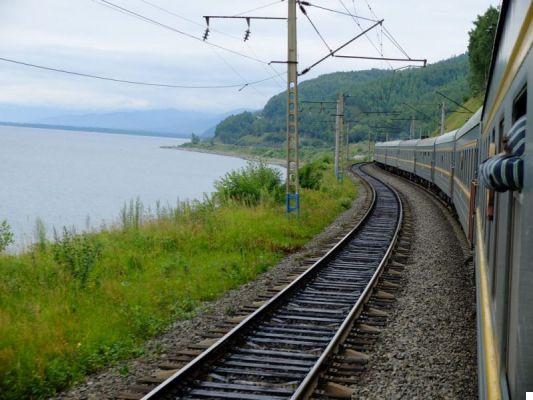
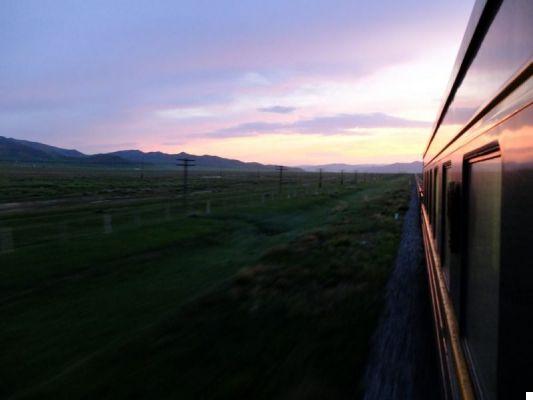
Mongolia: 4 days between Karakorum, Hustai National Park and the desert
Arrive at Ulaanbatar Our guide, Amraa, a very cute and very young girl (who speaks almost perfect English) came to pick us up. From there, with the driver and a 4 × 4, we started our 4 days tour in Mongolia. The roads of Mongolia are few and very bumpy; furthermore, there are no road signs. Shooting alone would also be possible, but right now I would advise against it. If anything happens to the machine you could be in serious trouble! You travel hundreds of kilometers without encountering practically anyone. If you do not want an organized tour (which certainly costs more!) Once you arrive there and you will have no difficulty in organizing an ad hoc tour directly on site (you can contact, for example, Selena Travel, the agency she works for Amraa and let you make a quote).
Our first stop in Mongolia was the Hustai National Park, the only place in the world where you can see Takhi wild horses! In this case we have to say "long live the zoos" !! These horses had become extinct in Mongolia, but some examples existed in several European zoos. Thanks to the EU-Mongolian program, these specimens were brought back to Mongolia and monitored; from 5/6 plowing horses, now there are more than 300 in the Park! On our walking (and driving) tour along the park we were able to see a small group of them quite up close. Here we have also seen many marmots, they are very funny!
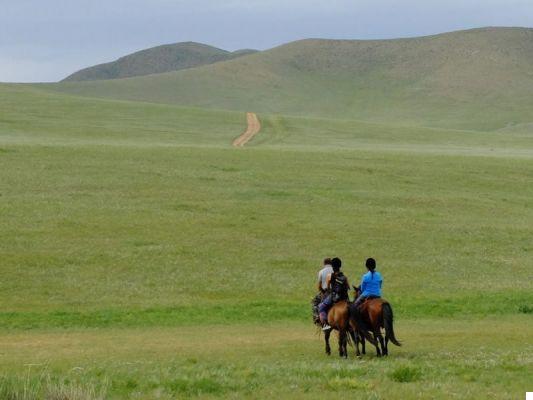
From Hustai we moved to Karakorum, l'antica capitale di Gengis Khan. The Chinese have knocked down pretty much everything, except for the beautiful monastero Edene Zuu (which reminded me a lot of Tibetan monasteries). The place is truly impressive, with several dozen stupas that surround the temples of the monastery. In Karakorum there is also a quite interesting museum which helps to understand the history of Mongolia. On the third day (when it didn't stop raining for a minute alas!), We made the transfer to Elsen Tasaekhai, but above all we met a family of nomads (1/3 of the Mongolian population is nomadic!). It was an amazing experience !! Thanks to Amraa, who acted as interpreter between us and them, we were able to ask him a few questions to understand how they live, how often and where they move, etc. .. and they asked us questions. They offered us sweets made with mare's milk (terrible!) And the same milk that we saw being milked .. we then had to taste it .. sob. They wore traditional clothes and we took pictures that Amraa will then print and bring to them. I got excited, it's amazing to see how you can live happily in a completely different way from ours!
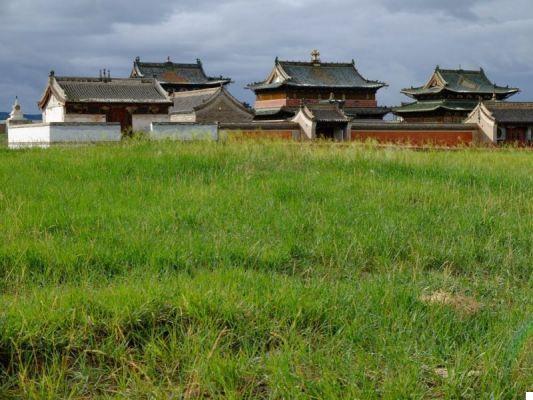
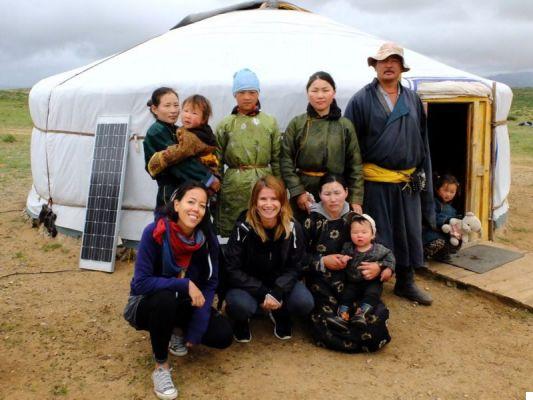
On the last day (with the sun thankfully!) We visited the area of Elsen Tasaekhai, where prairie, sand dunes and rocky mountains converge. An incredible landscape !!
From there, alas, we went back to Ulaanbataar to take the last train back to China. Luckily we were in the Mongolian capital just an hour, the time it takes to understand that there is really nothing interesting to see! They are building Chinese-style skyscrapers and high-rises that have very little of charm. Skip it on foot!
La Mongolia however, I was very impressed from all points of view. The landscapes are endless, incredible .. you can see immense grasslands populated only by horses, camels. hawks, and herds of goats, sheep and cows. The people are really different from both the Russians and the Chinese (it reminded me a bit of the Tibetans), they are all very kind and affable. Almost all young people speak English and it is clear that it is a democratic country that has left communism behind, and is growing rapidly. I would have liked to have had more days (and more money) to tour it more, to see the Gobi desert and the lakes region to the north, but the journeys are really long! Surely I will find a good reason to come back soon and see the rest?
NOTE: I gher (aka Mongolian tents / nomads' houses) are better than a hotel room! They are very large (we only had one for the 2 of us every evening and it must have been at least 15-20 square meters large), there is electricity and a wood stove that heats a lot and in a few minutes. If it rains (and unfortunately we have taken some water) no water enters and you are perfectly warm. The only flaw .. the bathrooms are outside, in concrete structures, like in a classic campsite.
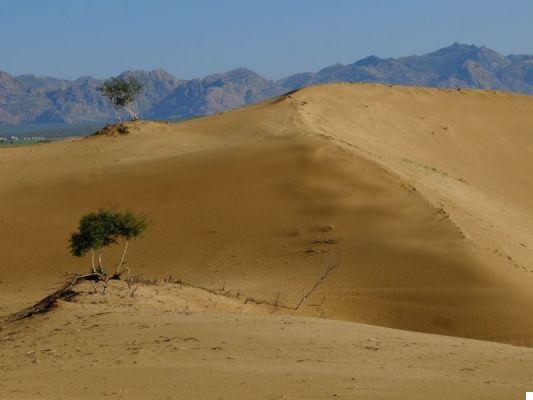

Third route: from Ulaanbaatar to Beijing (China)
A few days before leaving we learned that iThe Ulaanbaatar-Beijing train was overbooked (which often happens, it seems, from what we have heard comparing ourselves with other travelers) and we decided to opt for a local Mongolian train to the border and then continue by bus once we entered China. The alternative would have been the plane. It was quite exhausting but it was still worth it! We could see how the landscape changes from Mongolia to Beijing (from the desert to the green mountains), without forgetting the view of the great wall from the Chinese highway! Priceless!
Il crossing of the Mongolia-China border it is downright unnerving; it can only be crossed by car or bus and it takes at least 3 hours. We (and 60 other Christians) were put on a 30-seater bus, from which we had to get off and on with our luggage several times (at the Mongolian border, in the middle ground and at the Chinese border). Once we arrived in the first Chinese country, we then took a minivan (with 3 other Mongolian boys) which took us to Beijing in “only” 9h. I have never appreciated China so much as on this occasion! Entering the Beijing time zone was wonderful!
We had both already been to Beijing (you can find all the information in the article Beijing, Xian and the Great Wall: the wonders of imperial China), so we stopped only one day before resuming the flight at a time.
In conclusion I can tell you that I really enjoyed this trip! Traveling by train gives you the opportunity to see how landscapes change gradually, it gives you back the "real time" of life; I was afraid that I would be bored (I am notoriously hyperactive), that I would not know how to pass the time on the train, but it never was. Time passes quickly, between sleeping, eating, reading, chatting with other passengers, playing cards, etc. When we landed on Baikal and in Mongolia I always missed the train!
It was a unique experience, which I recommend everyone to do at least once in their life.
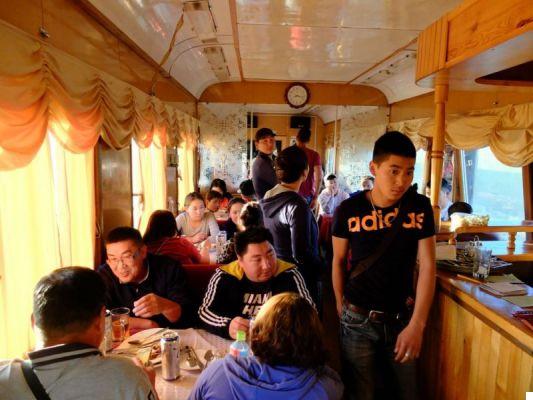
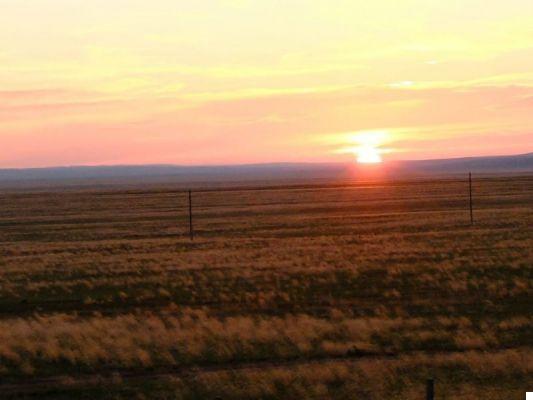
The Trans-Siberian: everything you need to know about the train
Russian train
Depending on the route, the train changes (it is Russian, Mongolian or Chinese). The Russian train it is quite modern, with at least 10 couchette cars and a dining car. Exist the first, second and third class: the first class has only 2 beds per bunk, the second has 4 and can be mixed or female only, the third is a single, open car, with all the berths in sight. Each passenger is given pillowcase, towel, sheets, blanket and pillow. Each car has 2 bathrooms (with toilet and sink) and 4/5 220 volt power sockets.
If you don't feel like going to the restaurant car, on every car there provodnitsa (the manager of the wagon) can sell you tea, coffee, chocolate, snacks, water and little else. A coffee costs 30 rubles (40 euro cents).
Al restaurant car find a fairly varied menu of salads, hot and cold dishes, vodka, beer and other drinks; a full meal is about 1000 rubles per person (13/14 euros). PS vodka costs less than water!
The provodnitse also take care of keeping the wagon and the toilets clean. The bathrooms are more or less like those of our Intercity, with sink and cup.
Crossing different time zones, the tables with the train stops (and the relative stopping times) are always indicated considering the Moscow timetable; if you do not have a mobile phone that updates automatically, it is difficult to understand when and if the time zone has changed.
The same also applies to stations: the indicated departure / arrival times always refer to the Moscow time.
Chinese train
Il chinese train it is less modern and clean. There is (at least apparently) no air conditioning, there are fewer power outlets and they don't give you towels (even the sheets aren't sealed like those on Russian trains).
Mongolian train
Il Mongolian train it is almost the same as the Chinese one, but the sheets are sealed and the bathrooms are a bit cleaner. Remember to recharge everything (mobile phone, etc.) before taking this train for the last leg: the sockets are there but they don't work! The few that seem to work have a ridiculous voltage and it would take 3 days to recharge a cell phone.
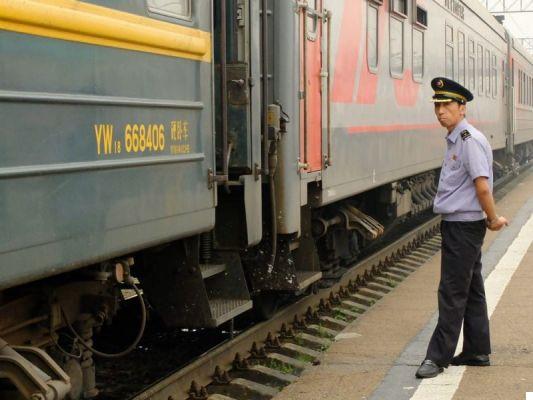
Where and how to buy tickets for the Trans-Siberian
For the Russian route (up to Irkutsk), train tickets can be purchased directly on the Russian railways website (which also has an English version). For subsequent routes, they must be bought directly at the station in Irkutsk or Ulaanbataar (Mongolia).
We decided at the last minute to make this trip (not even a month before) and we had to rely on a specialized agency called Trans-Siberian that took care of the visas (Russian and Chinese) and that also sold us the mini-tour in Mongolia. Then calculate that, especially in Russia more than in Mongolia, NOBODY speaks English and being understood is really hard. This agency has existed for many years, is very efficient and we had a great time. He communicates with them by email (in Spanish) and they are very punctual and precise in their answers and clarifications.
Once we had chosen the type of tour to do in Mongolia and the departure date, they proposed us an itinerary from Moscow that also included Lake Baikal; the trains are not there every day and you have to fit everything together.
How much does the Trans-Siberian cost
The cost for ours 14 day tour (which included train from Moscow to Beijing in 2nd class, 3 days in hotel on Lake Baikal and 4 days of tour in 4 × 4 and full board in Mongolia with nights in gher) was of 1900 euro each.
But the sooner you book, the less you spend! If we had booked 2 months before (and not 1 as we did), we would have spent at least 300 less each.
What are the visas to do?
Before leaving you must have the Russian visa and Chinese visa. Mongolia has abolished the visa since 2014. For the Russian visa it takes about 10 days (it costs about 80 euros + 30 of compulsory health insurance), while for the Chinese one it takes about 5 (the cost is 115 euros). For both there are emergency procedures, obviously paying more.
Going through the Trans-Siberian agency, they provide them with the necessary documents to obtain visas (invitation letters, etc.), otherwise you have to ask the Russian hotel to send you the invitation and print the flight and hotel reservations in China.
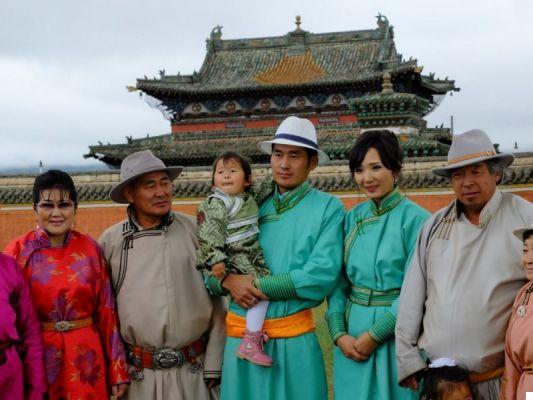
Will I find internet and wifi during the Trans-Siberian?
Wifi is always found in Russian cities (except for Bolshie Koty and the other small villages of Lake Baikal), NEVER during the tour of Mongolia (we only found it in the Karakorum museum) and almost everywhere in Beijing. In China, however, obscurantism is increasingly present. Compared to the last time I was in China in 2013, the situation has worsened. The internet is very slow and most social networks don't work (unless you have a VPN app).
Regarding the current and voltage, you can recharge everything practically anywhere and without the need for adapters. The only exception is the train of the last Mongolia-China route: there it is practically impossible.When to go and what to bring
Obviously, the trans-Siberian can always be done and I think it has its charm in every season (even in the middle of winter with -30 ° and snow!). Clearly if you go there in the spring and summer it is hot almost everywhere and you can get off the train and explore a lot more. Siberia, Mongolia and China have a continental climate: it is very cold in winter and hot in summer. In August (when I was there) You always wear short sleeves and shorts. The only exception may be Mongolia; if you catch rainy days (as it happened to us unfortunately) the temperature drops a lot both day and night. I blessed the thermal shirt I threw in the backpack! Some heavy clothing is therefore good to bring it. If, on the other hand, you find sunny days (which are most of the time) it is hot and you sweat a lot.
